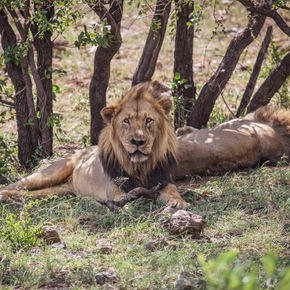
DID YOU KNOW ?
There are 714 UNESCO approved Biospheres in the world, with nine being in South Africa and three in Limpopo.
WHAT ARE
BIOSPHERE RESERVES ?
Biosphere reserves can comprise terrestrial, marine and coastal ecosystems. Each reserve promotes solutions reconciling the equally important elements of biodiversity conservation with its sustainable use. Biosphere reserves are ‘Science for Sustainability support sites’ – special places for testing interdisciplinary approaches to understanding and managing changes and interactions between social and ecological systems, including conflict prevention and management of biodiversity. Nominated by national governments, Biosphere reserves remain under the sovereign jurisdiction of the countries where they are located, yet their status is internationally recognized.
UNESCO Biosphere Reserves support, encourage and compliment Local Authorities, Local Communities, District Councils, Provincial and Government Departments as well as all other relevant decision-makers to apply the principles of responsible and sustainable development. These internationally-acknowledged Reserves are areas of terrestrial and coastal/marine ecosystems recognised within UNESCO’s Man-and-Biosphere framework. Biosphere Reserves are managed with three key functions in mind, as outlined below and comprise of three interrelated zones of varying environmental sensitivity.
Biosphere Reserves play a crucial role in conserving the natural biodiversity of an area, including the diversity of ecosystems, in terms of genetic and species diversity as well as ecosystem services and processes. The conservation of not only the scenic beauty but also the cultural and historical resources within its boundaries is a key component of the environmental conservation of Biosphere Reserves.
A Developmental role is given traction in Biosphere Reserves by combining conservation objectives with the sustainable use of ecosystem resources and indigenous knowledge systems to benefit local communities. This process fosters ecological and socio-cultural sustainable economic development.
Biosphere Reserves also play an important logistic role, by providing research, monitoring, education and training opportunities as well as research facilities for local, regional and worldwide purposes. This is achieved through exchange programmes organised within the framework of an international network which links all biosphere reserves under the auspices of UNESCO
"Biosphere reserves are ‘learning places for sustainable development’. They are sites for testing interdisciplinary approaches to understanding and managing changes and interactions between social and ecological systems, including conflict prevention and management of biodiversity." UNESCO
KEY FUNCTIONS.
ENVIRONMENTAL ZONES.
Biosphere Reserves are managed with these three roles in mind and comprise of three interrelated zones of varying environmental sensitivity as shown in the diagram.
• Core Areas contain the most sensitive environments that contribute to the conservation of species and genetic variation and render vital services to everything living in it;
• Buffer Zones, either surround or adjoin the Core Areas, and are intended to be the “buffer” between the Core Areas and the Transition Zones;
• Transition Areas form the remaining areas, which foster socio-culturally and ecologically sustainable economic and human development.
All Biospheres aim to conserve and buffer environmentally and culturally sensitive areas while encouraging sustainable development in the Transition areas.








